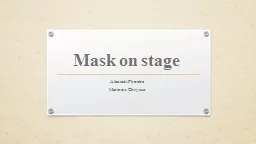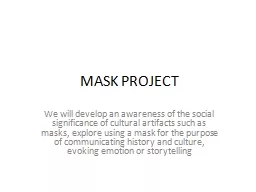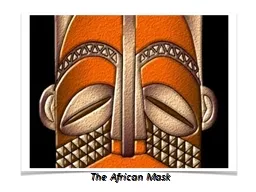PPT-Mask on stage
Author : giovanna-bartolotta | Published Date : 2017-08-17
Alexiadi Phoebe Marinou Chryssa The masks of the world display virtually infinite variety from the simplest of crude false faces held by a handle to complete head
Presentation Embed Code
Download Presentation
Download Presentation The PPT/PDF document "Mask on stage" is the property of its rightful owner. Permission is granted to download and print the materials on this website for personal, non-commercial use only, and to display it on your personal computer provided you do not modify the materials and that you retain all copyright notices contained in the materials. By downloading content from our website, you accept the terms of this agreement.
Mask on stage: Transcript
Download Rules Of Document
"Mask on stage"The content belongs to its owner. You may download and print it for personal use, without modification, and keep all copyright notices. By downloading, you agree to these terms.
Related Documents














